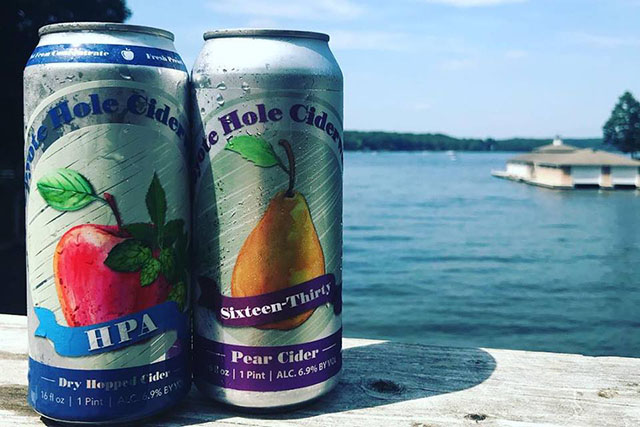
For Nicole Ward and Eastman’s Forgotten Ciders — and probably for a lot of other cideries — the tasting room is really the truest representation of who you are as a business.
”It is for us because it’s set within our orchard,” she said of the Michigan cidery. ”People can come out, have the most access to our ciders.”
That’s because Eastman’s only takes a small sampling to farmers markets while bars generally only carry one brand at a time, and even party stores have limited varieties they carry at once, she noted.
At the tasting room, consumers can see where everything is grown, picked, pressed, fermented and so forth.
“It’s a “tree to tap” experience to come out to our tasting room,” Ward said, “and we feel people get to know us better by making the trip out there.”
The first question to customers at Broad St. Cider is ‘Have you been in before?’ pointed out Jon Moore.
“The vast majority still have not, to which we explain that we make dry ciders, have guest ciders that are generally sweet, etc.,” he said. “Our selections tend to fall into a beer palate (full mouthfeel, semi-dry, hoppy, etc.) or wine palate (crisp, dry, high tannins from the juice or infusing with things like tea) range, and we navigate people that way, or just tell them to get a flight of three to 12 ciders to try a range.”
Moore said that they primarily hire educators or people who have a knack for explaining new concepts to customers who might be very interested but currently do not understand all the nuances of cider.
“Our problem customer ironically is someone who says, ‘I drink hard cider all the time — I love the sugary mass market brands!’ Moore said. “It is the equivalent as if someone walked into a craft brewery having only drank swill malt liquor and thinking they love beer.”
Coyote Hole Ciderworks has the mentality that not one way works for every customer when it comes to marketing to their needs.
“You need to employ several different ways to educate your customers in order to be successful,” explained Coyote Hole co-owner Chris Denkers. “We … have tasting sheets that go along with our flights explaining about our ciders for people who like to read each cider as well as information up on our walls in the tasting room.”
Denkers pointed out that getting your cidery’s story and information about your ciders online is key.
“Make sure you get it on as many platforms as possible, be it your website, social media outlets, blogs or wherever,” he said. “People in today’s world will check you out before visiting your tasting room or if you have your cider for the first time out at a restaurant or purchase it at a retailer, they will want more information and you need to be able to get it out to anyone and everyone you can.”






4 Trackbacks / Pingbacks